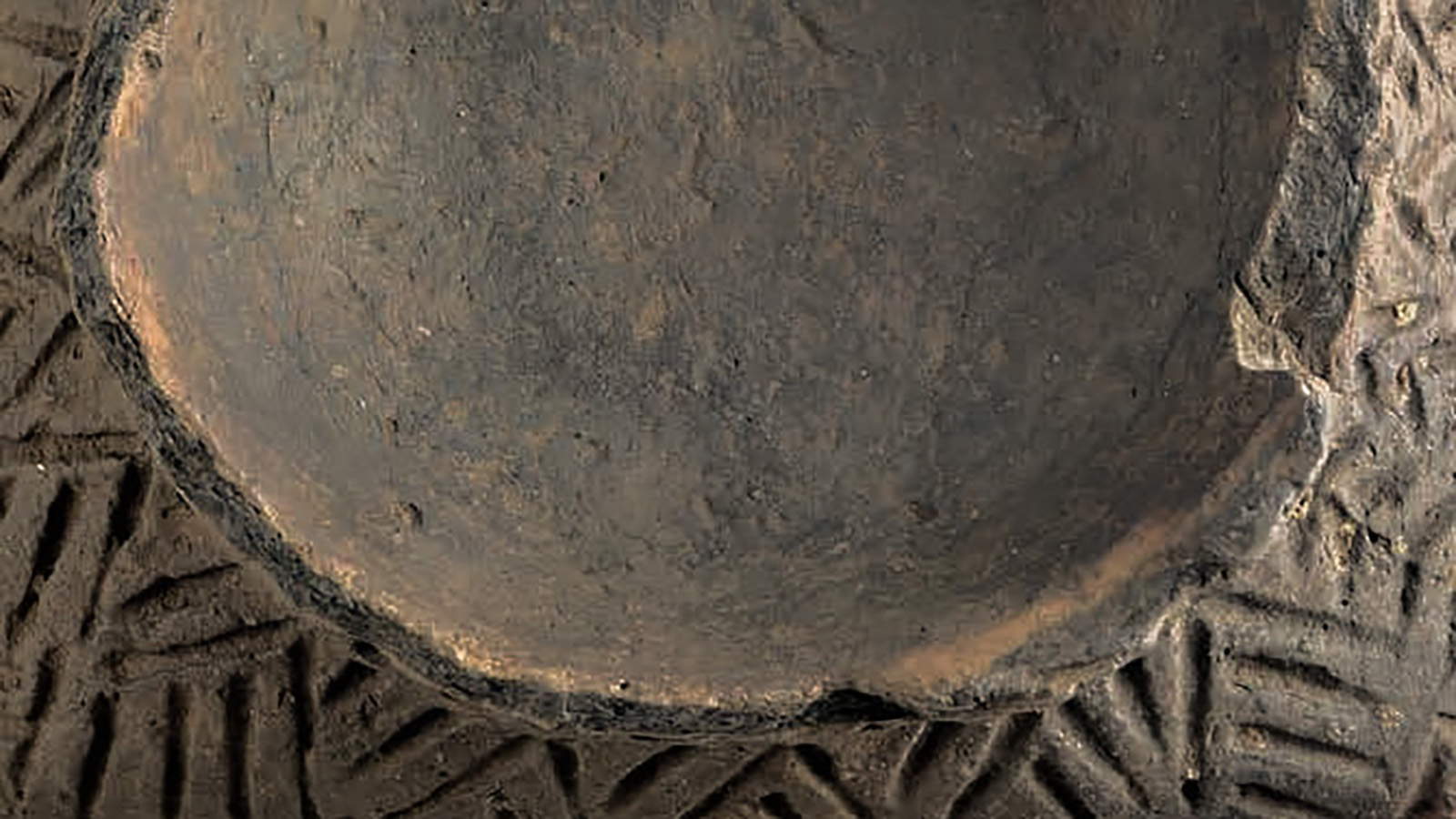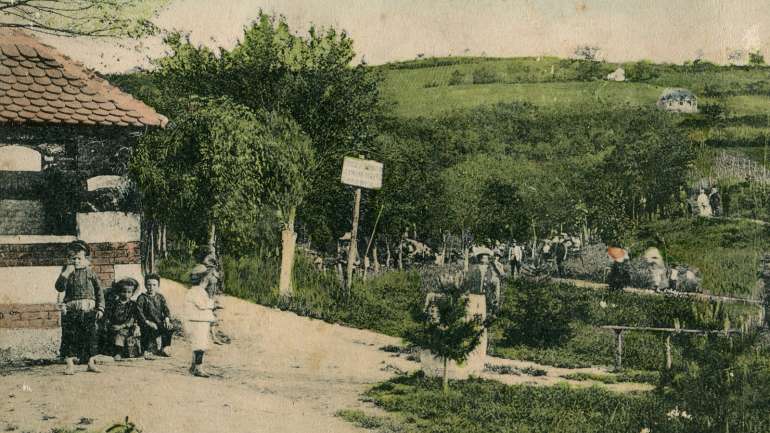By: Sonja Perić, senior curator
Jagodina, located in the fertile Great Morava Valley, surrounded by villages along the Velika Morava, on the slopes of Juhor and Crni vrh, inherits a rich cultural heritage from prehistory to the present day. The temperate continental climate, Morava, Lugomir and Belica valleys and the richness of water sources, were a precondition for the development of life and the forming of the first permanent settlements in this area from the period of the Early Neolithic, Proto-Starčevo and Starčevo cultures. More than 260 archeological sites have been discovered in the Jagodina region. But only in the villages on the Crni vrh, more than a hundred archeological sites have been discovered during several decades of work of the Jagodina Museum. One of them, Dunjićki šljivari, is located in the village of Medjureč, 8 km southwest of Jagodina.
Medjureč is a village on the eastern slope of the mountain Crni vrh, “… more in the plain than in the mountains…” as Stanoje Mijatović mentions in his work, “Belica, settlements and the origin of the population”. It is located along both sides of the Jošanička River, and it got its name because it used to be between the rivers, Jošanička Reka and Lozovički Potok, so we archaeologists like to call it Mesopotamia (“Land between two rivers”), which immediately associates a developed culture from prehistoric times.
Thirteen sites with archeological material were located in Medjureč, during archaeological prospecting. Only prehistoric material (older Neolithic, Bronze Age or Early Iron Age) was found at seven locations. Prehistoric and medieval material was found at three locations, one site belongs to the ancient and medieval period, and two sites contain fragments of all three periods (Prehistory, Ancient Roman and Middle Ages). Svetlana and Milutin Tomić accidentally found a ceramic altar on their field in Medjureč. They donated it to the museum, where it is still on permanent display today. This unique finding with rich ornamentation encouraged archaeologists to begin archaeological research at the site of the find, at the “Dunjićki šljivari” sites.
The fragmented altar, handmade, from purified clay with an admixture of mica, brown in color, has a square base with extensions at corners of unknown shape, which were vertically perforated, which can be seen at one damaged corner. From the square base, a wide, circular recipient is formed, the sides of which rise conically, but are almost completely damaged. There is a line of stitches made with a sharp tool at the transition from the stand to the recipient. The interior of the recipient has a solidly polished surface, and the entire outer surface is decorated with a complex ornament made by a combination of the technique of embossing and engraving geometric motifs. From the circular recess bordered by a plastic ring in the center, on three sides there is an ornament in the form of a fir twig, and the rest of the surface is filled with irregular, disorganized or partially organized motif of parallel or broken lines, “V” prints, zigzag lines, or a fir twig motif. The ornament was made by carving and pressing the tool into the wet clay before baking the dish. The tool could be made of bone, stone or wood.
This item of exceptional beauty carries a number of questions and ambiguities. Due to the great damage, it is not possible to determine with certainty what its complete shape is, what its purpose is and how it was placed. The assumption that it was used for cult purposes is probably correct, but whether this is the lower part of the altar, whose legs were devastated, and why they would be perforated in that case, or whether the lid of the cult vessel, whose protomes were destroyed, cannot be to say with certainty. The shape itself supports the assumption that it is a four-legged altar with a wide, oval recipient, but the complex ornamentation of the entire surface and on the underside would not have, in that case, justification, because it is not visible, which leads us to think that this object could have been the lid of a two-part vessel or altar. The rich ornamentation of this object, created in the Neolithic dawn, when ceramic altars were made on four or three legs, with a shallower or deeper recipient, which is characterized by a complete absence of decoration, testifies to the special significance of this specimen for the community in which it originated, for the cult and ritual of keeping the seeds of cereals for sowing, on which their life and survival depended.
During July and August 2007, the Archaeological Institute in Belgrade, in cooperation with the Regional Museums in Jagodina and Paraćin, with over 20 archeology students from Belgrade and Republika Srpska, conducted protective-trial archaeological research. The works were supervised by professor Slaviša Perić, phd and the research associate was also a distinguished guest and associate of the Archaeological Institute in Sofia Tatjana Stefanova, phd.
Although smaller in volume, this research gave significant results and rich movable archaeological material, which will enrich the fund of the Regional Museum in Jagodina. The main goal was to determine the character of the site and its cultural and chronological affiliation, and what was assumed was confirmed to be a single-layer Neolithic settlement from the Early Neolithic period.
On a gentle slope between the village road and the left bank of the stream, in the north-south direction, three archeological probes were located and researched, the first of which gave the most data. It affected a part of the residential building, with a cultural layer that ends at a depth of about 1.80 m. It is a semi-buried dugout with a low above-ground construction made in the technique of wickerwork and beautiful and a fireplace inside the building. All movable archeological finds, primarily ceramic, belong to the same cultural circle, the same and relatively narrow chronological framework, with uniform typological characteristics and clear features of the early Neolithic, Protostarčevo culture, and the results of C14 dating determined this object and the entire horizon housing in the late 7th and early 6th millennia BC. The oldest specimens date from 6211–6134 BC and the youngest 5927–5765 BC. This means that the Neolithic settlement in Medjureč belongs to the group of the oldest Neolithic settlements in the Central Balkans and that the area of central Pomoravlje, with the valley of the river Belica and Levač area, was one of the most densely populated areas in Southeast Europe during the early Neolithic.
In addition to fragments of pottery, many of which are decorated with the barbotine technique (throwing mud and rounding the surface of the pot), which had both functional and aesthetic character, a relatively large number of zoomorphic plastic finds were found. There are mostly figurines of domestic animals, primarily bovids and stylized representations of cattle in the form of small bucranions. Objects made of bone and stone were also discovered, the most significant of which is a group find of rock crystal – quartz, raw materials and semi-finished products, which, apparently, was not brought from the side, but originated from Crni vrh.
The results of research from 2007 and subsequent geophysical surveys convincingly show that there was a smaller and fragmented, single-layer settlement at the site of Dunjički šljivari in Medjureč, at the earliest stage of the Late Stone Age. It was founded by the first cattle breeders and farmers who inhabited this part of Southeast Europe, who continued to engage in hunting and fishing, but also the production of cereals and legumes, and a very important branch was cattle breeding, as evidenced by numerous performances of these animals in their iconography, who made their dishes and other useful and cult objects from clay extracted along the stream near this locality and who left us their traces, to discover, examine and study them, and above all, to preserve them. Future archeological research will help us shed light on the life of these ancient, prehistoric communities, and the conscience and care of the locals and all of us are a prerequisite for preserving this site and all others in the area of the village Medjureč, Crni vrh and beyond, throughout our beautiful and rich countries…





